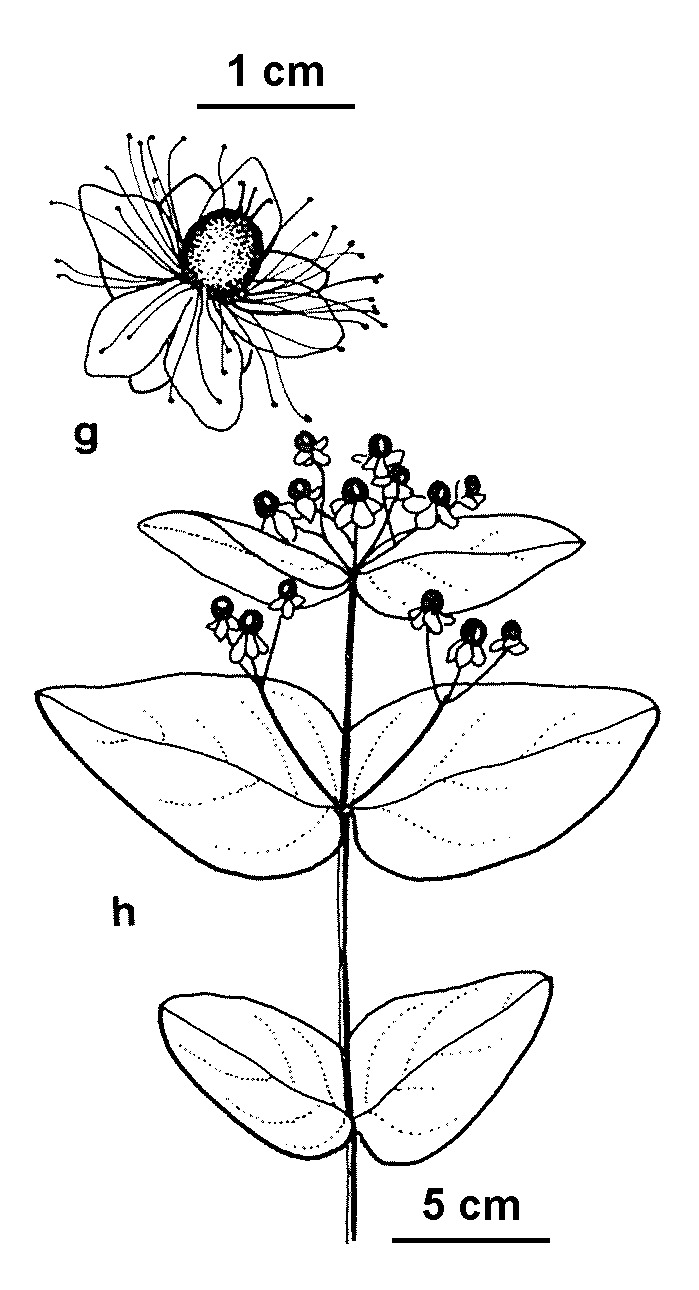
Semi-evergreen shrub to 1 m tall. Young shoots with two expanded edges. Leaves ovate, mostly 5-10 cm long, bluntly cordate at the base, aromatic when crushed, whitish below, dots translucent, stalkless, orange-red in autumn. Flowers solitary or few mostly 2-2.5 cm wide. Sepals rather leaf-like, about as long as the petals. Stamens in 5 clusters about as long as the petals. Styles 3; summer. Fruit dry, berry-like, becoming black.
Europe, W Asia
Grows naturally in high rainfall areas (more than 750 mm annually) generally in damp, shady sites and forest edges.
The common name is derived from the French toute-saine or 'heal-all', referring to its medicinal properties. A proclaimed noxious weed for the state of Victoria (except for the metropolitan area) and weedy in New South Wales and New Zealand.
Leaves stalkless; stems 2-angled; flowers about 2.5 cm wide; sepals uneven and reflexed on old flowers, persistent; styles 3, free, short; fruits persistently fleshy.
Source: (1997). Clusiaceae. In: . Horticultural Flora of South-eastern Australia. Volume 2. Flowering plants. Dicotyledons. Part 1. The identification of garden and cultivated plants. University of New South Wales Press.
